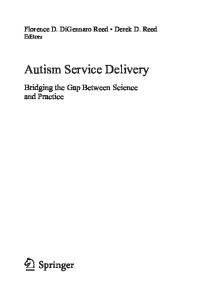Logistics and Supply Chain Innovation Bridging the Gap between Theor
This contributed volume presents state-of-the-art advances in logistics theory in various fields as well as case studies. The book reports on a number of recently conducted studies in the Dinalog and the EffizienzCluster LogistikRuhr, thus bri
- PDF / 8,679,658 Bytes
- 432 Pages / 453.543 x 683.15 pts Page_size
- 47 Downloads / 385 Views
Henk Zijm Matthias Klumpp Uwe Clausen Michael ten Hompel Editors
Logistics and Supply Chain Innovation Bridging the Gap between Theory and Practice
Lecture Notes in Logistics Series editors Uwe Clausen, Dortmund, Germany Michael ten Hompel, Dortmund, Germany Robert de Souza, Singapore, Singapore
More information about this series at http://www.springer.com/series/11220
Henk Zijm Matthias Klumpp Uwe Clausen Michael ten Hompel •
•
Editors
Logistics and Supply Chain Innovation Bridging the Gap between Theory and Practice
123
Editors Henk Zijm Faculty of Electrical Engineering University of Twente Enschede, Overijssel The Netherlands
Uwe Clausen Institute of Transport Logistics TU Dortmund University Dortmund Germany
Matthias Klumpp Institute for Logistics and Service Management FOM University of Applied Sciences Essen Essen Germany
ISSN 2194-8917 Lecture Notes in Logistics ISBN 978-3-319-22287-5 DOI 10.1007/978-3-319-22288-2
Michael ten Hompel Dortmund Germany
ISSN 2194-8925
(electronic)
ISBN 978-3-319-22288-2
(eBook)
Library of Congress Control Number: 2015946105 Springer Cham Heidelberg New York Dordrecht London © Springer International Publishing Switzerland 2016 This work is subject to copyright. All rights are reserved by the Publisher, whether the whole or part of the material is concerned, specifically the rights of translation, reprinting, reuse of illustrations, recitation, broadcasting, reproduction on microfilms or in any other physical way, and transmission or information storage and retrieval, electronic adaptation, computer software, or by similar or dissimilar methodology now known or hereafter developed. The use of general descriptive names, registered names, trademarks, service marks, etc. in this publication does not imply, even in the absence of a specific statement, that such names are exempt from the relevant protective laws and regulations and therefore free for general use. The publisher, the authors and the editors are safe to assume that the advice and information in this book are believed to be true and accurate at the date of publication. Neither the publisher nor the authors or the editors give a warranty, express or implied, with respect to the material contained herein or for any errors or omissions that may have been made. Printed on acid-free paper Springer International Publishing AG Switzerland is part of Springer Science+Business Media (www.springer.com)
Foreword by Minister Melanie Schultz van Haegen
The Netherlands: gateway to Europe. It is this short phrase that underlines the unique position of our country. Our maritime ports in Rotterdam and Amsterdam, for instance, import 536 million tons of goods every year. Most of these are shipped to destinations further inland, traveling by road, rail, or water. Germany as our most important trade partner is a vital destination. Both countries realize that a strong industry cannot survive without a healthy logistics and supply chain sector. Apart from investments in infrastructure as taking place in both countries, inno
Data Loading...











